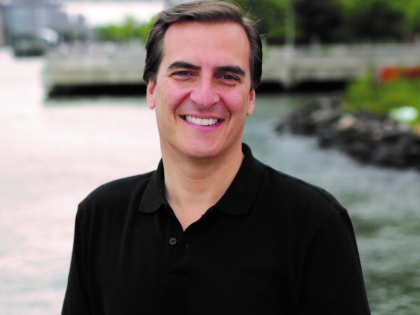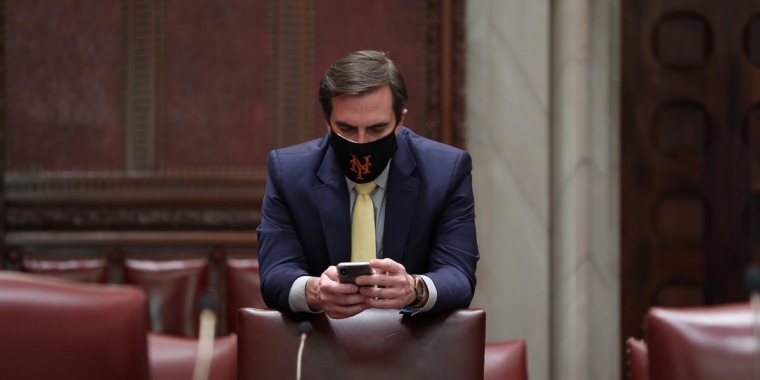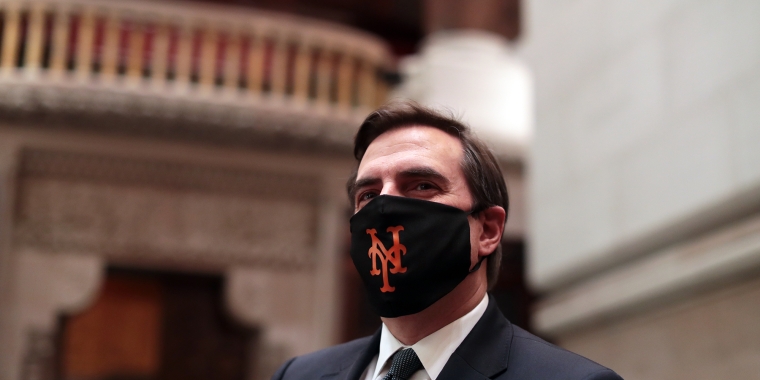
Buffalo News: State evaluates highs and lows of new voting changes

Elections officials and state legislators alike are evaluating the extensive changes in how New Yorkers choose their elected representatives, just as the 2020 results are officially entering the books.
And they say that early voting, expanded use of absentee ballots and other changes may prove only the beginning. The state Legislature's still-new Democratic majority as well as reactions to Covid-19 concerns could mean even more reforms lie ahead – including eliminating boards of elections.
"All told, we've made more than 60 amendments to the Election Law in the last two years, so we've done a lot," said Democratic State Sen. Zellnor Myrie of Brooklyn, chairman of the Senate Elections Committee. "But there's much more to do."
Myrie said lawmakers now will turn their attention to the results of their reforms, like long lines at early voting sites, problems with mailed votes, and taking weeks to officially determine some elections.
While many election procedures changed as a result of Democrats taking over the Legislature, Covid-19 fears altered the time-honored ritual of going to the polls amid concerns about a contagious and deadly coronavirus. Now Myrie and others are determining which changes worked, which didn't and what lies ahead.
That could include a new approach to local boards of elections, the bipartisan panels that feature a Democratic and Republican commissioner in coveted county patronage jobs.
"There is an appetite for reform of local boards of elections," Myrie said. "I think the Legislature will look at that next."
The chairman hopes for a more "professional" rather than political approach. That could mean shifting responsibility to the secretary of state, a different state agency or local officials.
"There needs to be a discussion of how to make this more of a civil service job working at the Board of Elections and not simply a political patronage job; whether the current structure is the way to go," he said. "The conversation needs to be about whether that now becomes a hindrance in the administration of elections and a recipe for gridlock."
Defenders of the current system, however, say the bipartisan approach has historically proven reliable and does now, too.
"I don't know if there's any appetite for that," said Erie County Democratic Elections Commissioner Jeremy J. Zellner. "A structure with bipartisan checks and balance works."
State Republican Chairman Nicholas A. Langworthy, meanwhile, supports the integrity of the current system, though he did not specifically address replacing current boards.
"I have faith in our bipartisan Board of Elections in New York and have faith in fair elections in New York," he said, adding that a bipartisan panel of experts still might be convened to examine the system and propose improvements.
Other changes, such as automatic voter registration, appear to be on the horizon. State Sen. Timothy M. Kennedy and Assembly Majority Leader Crystal D. Peoples-Stokes have urged Gov. Andrew M. Cuomo to sign a bill allowing eligible voters to become automatically registered when interacting with the Department of Motor Vehicles, a housing authority or a Medicaid office. They point to studies estimating 1 million voters could be automatically registered.
Beyond that, those charged with conducting safe and efficient elections acknowledge 2020 proved a challenge, especially the public's embrace of the early voting option that Myrie calls "one of the crown jewels of the reforms."
"In the 2019 general election we had 250,000 people take advantage of early voting. We had 2.5 million this year that ended up relieving the stress on Election Day," he said. "Imagine what the polling sites would have looked like with 2.5 million people on Election Day. In that respect, the Legislature demonstrated its ability to prioritize for the voters in the State of New York."
For the most part, those who administer the almost overwhelming task of accommodating millions of voters like what they observed in early voting and Election Day systems.
"Early voting worked, even though it was not designed to be a substitute for Election Day but to support Election Day," said John W. Conklin, spokesman for the state Board of Elections. "With a turnout of 2.5 million people, it was like stuffing 50 pounds of material into a 5-pound bag."
Indeed, almost 168,000 in Erie County took advantage of the second year of early voting, scoring the second highest percentage in the state after Staten Island. But even with its 37 polling sites, the most of any upstate county, long lines formed in populated towns like Amherst. In smaller municipalities, officials reported few problems.
State Sen. Michael Gianaris, D-Queens, the Senate's deputy majority leader, has already introduced legislation calling for at least one early polling place for every 25,000 registered voters.
“Boards of elections failed to adequately provide enough early voting opportunities this year. All over the state, people have been waiting several hours to vote, which is not what our democracy should look like,” he said. “The current structure of our boards of elections has failed to fulfill its primary mission of facilitating voting. Drastic reform is necessary.”
Conklin of the state Board of Elections said he expects the Legislature to hold hearings on all changes, including early voting, when it reconvenes in January. He foresees adjustments, but notes that many changes were quickly instituted in response to Cuomo's Covid-19 orders.
"We executed what the Legislature designed and certainly the Legislature will make any changes necessary," he said. "And we exceeded the statutory requirement of one early voting polling site per 50,000 registered voters."
But not everyone is thrilled with all of New York's new ways of voting. Langworthy has consistently echoed President Trump's opposition to mail-in voting because of "horror stories" he said he has seen in various parts of the country. He argues that in-person voting contains myriad safeguards against any type of fraud, and that it represents the safest system.
"If I slide my vote into the machine, no one can challenge that vote," the chairman said. "It does open the system to outside forces, like rogue postal workers."
"If you can go to the grocery store, you can vote," he said.
But Erie County Conservative Chairman Ralph C. Lorigo believes absentee balloting will only grow with a Democratic supermajority in the Legislature.
"You can see New York makes it easy for absentee balloting because it did so well for the Democrats this year," he said.
Expanded use of absentee ballots has spawned other problems. Erie County ranked as one of the last in the state to count its 84,000 absentee ballots, with official totals unavailable for several elections until this week. Republican Elections Commissioner Ralph M. Mohr said the interregnum was used to double check against people voting in two municipalities and to wait for all mailed ballots to arrive.
The law allows for 13 days after Election Day, he said, and Erie County took full advantage of the time to get it right.
"We choose to wait until the deadline when all the ballots are returned," he said.
Gianaris, the Senate's second-in-command, has taken note of the absentee ballot situation, too. While he commended Erie for its many early voting sites and embrace of the new methods, he wonders why it takes so long for an absentee count.
"The whole nation was scratching their heads while Pennsylvania ... took three or four days and we're just starting our absentee ballot count," he said.
Gianaris has introduced legislation to allow canvassing of absentee ballots to begin at 6 p.m. on Election Day – three hours before polls close. He proposes that absentee ballot envelopes be examined for validity at the time of their arrival at local boards of elections.
“There is no good excuse for election results to continue to be up in the air," he said.
Myrie, the Senate Elections Committee chairman, said after U.S. Supreme Court rulings "gutted" some aspects of voting rights, he also sees the state stepping in, especially in minority communities.
"We have to work on a local Voter Rights Act," he said. "I've introduced a bill to that effect."
What about Republican complaints of being shut out of the reforms enacted so far? Myrie has little patience.
"I don't think there was any exclusion of Republicans ... they were not chosen by the people of this state," he said. "The people elected a Democratic majority and a Democratic governor and a Democratic Legislature and that's the way it works. There was very little consultation by them when they were in the majority."
But at a time of multibillion dollar deficits, paying for even more changes in the law could prove a problem.
"It's going to be about resources," said Conklin of the state board. "If you increase polling sites it will require resources, people surrendering their building for more days and the counties paying for workers. There are legitimate issues to be discussed when we have time to digest it all."
Still, Conklin thinks the state voting system has responded well to all the challenges it had to confront.
"A lot has changed from a year ago," he said, "and there is a lot to be analyzed and digested from this election."



